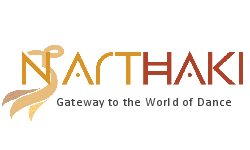
|   |

|   |
Nisarga - A welcome venture - V. Kaladharan e-mail: vkdamaru.eda@gmail.com Photos: Rahul May 12, 2025 North Kerala, the erstwhile Malabar, can boast of a priceless legacy when it comes to the classical performing arts. It is the birth place of Kottayath Thampuran whose four plays form the fundamental pillars of Kathakali, the highly evolved dance-theatre tradition. Malabar has for centuries been the nucleus of Kalarippayatt, the traditional martial art, the body movement techniques of which have heavily influenced Kathakali and probably Krishnanattam (dancing the life story of Lord Krishna) that came into being in the 17th century. Krishnageethi penned by Manaveda, the then Zamorin of Kozhikode, is the lyrics of Krishnanattam. However, this variegated artistic culture subsided drastically in the Malabar region by the latter half of the last century owing to a host of factors viz. social, political, economic and cultural. It was Kalamandalam Saraswathy, a native of Palakkad, who migrated to Kozhikode who laid the foundation for training in and performance of classical dance forms such as Bharatanatyam and Mohiniyattam in the Malabar region. There were, of course, several maestros in Kathakali including V.P. Dhananjayan in the Payyanoor area. But all of them invariably moved to the Kalakshetra, Chennai. Other than Saraswathy, one who upheld the legacy of Kathakali and dance in north Kerala was the late Chemencheri Kunhiraman Nair. Both Saraswathy and Chemencheri spared no efforts to cultivate an aesthetic culture for the preservation and promotion of the stylized dance forms of south India for nearly half a century. Aswathy V. Nair, the daughter of Saraswathy and the late literary laureate M.T. Vasudevan Nair, has embarked upon a challenging project, along with her husband Srikanth, of conducting a dance festival in Kozhikode as a regular annual event. The duo, the well-known Bharatanatyam dancers of the day, recently organized a two-day dance festival titled Nisarga, in the open-air auditorium in the Beach supported by Kerala Tourism and Bank of Baroda. 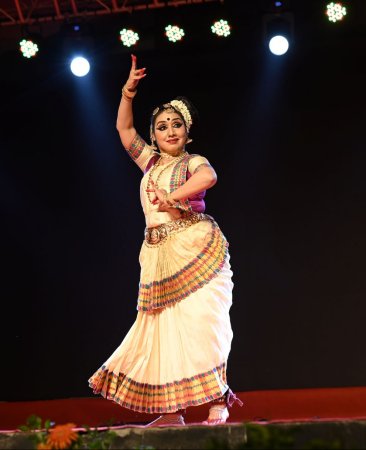 Dr. Neena Prasad On the very first day, Dr. Neena Prasad, an acclaimed Mohiniyattam dancer, presented a recital with live music. She began with the invocatory item, Cholkettu, followed by Bhoomi (The Earth), the main item in which the dancer made a bold attempt to unfold the tormented soul of the Earth caused by humanity over a period of time. Solely with the traditional weapons, how can a Mohiniyattam dancer deal with eco-sensitive issues and drive her/his message home is a moot question. Neena then moved on to the Ashtapadi, Sakhi hey Keshi, and depicted the sensual moods of the Nayika bewitchingly. A Thillana in raga Kapi composed by the vocalist Changanasserry Madhavan Namboothiri, was a fitting finale for the recital. Ramesh Babu on the mridangam, Shyam Kalyan on the violin and Arun Das on the edakka nourished the visual phrases Neena sculpted on the stage. 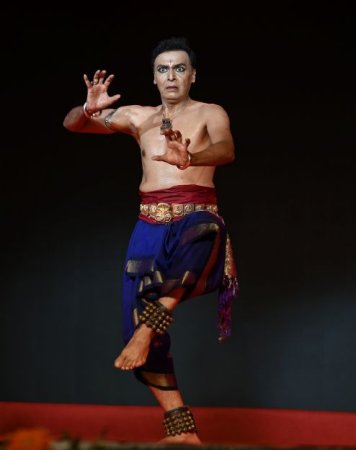 Vaibhav Arekar While solo recitals target Prekshakas (the initiated), group recitals are definitely more inclined towards the Nanajanam (the lay audience). This doesn't mean that the group choreographies are in any way inferior to solo performances. Vaibhav Arekar and his troupe based in Mumbai enjoy a unique distinction in presenting group recitals that invariably carry the rigour and the aesthetic vigour of Bharatanatyam. Following the Mohiniyattam performance of Neena, he and his talented disciples presented a recital stretching over an hour. After the invocatory piece, Vaibhav gave visual interpretation to the very first Ashtapadi "Pralaya payodhi jale". The explication of the Dasavathara of Lord Vishnu (here Lord Krishna) was vibrant, terse and stood out in terms of the breadth of emotions in myriad hues. Vaibhav and his group concluded the recital with a Thillana in raga Sivaranjini. The grace and solidity of Margam was perceptible through and through. 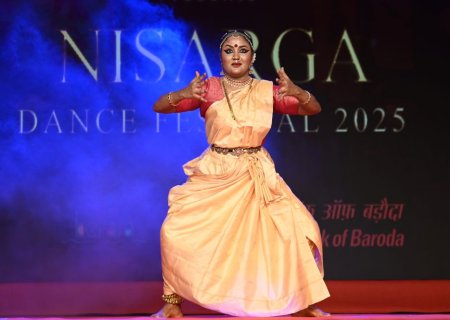 Sreelakshmy Govardhanan On the second day evening, Sreelakshmy Govardhanan, disciple of the doyen Pasumarthy Rattaiah Sarma, started her Kuchipudi recital with Mandooka shabdam, a traditional item. She unravelled the evolution of Mandodari from the form of a frog to a beautiful maiden, King Ravana falling in love with the damsel, his irresistible passion, her hesitation and her eventual union with the invincible demon king. Sreelakshmy then proceeded to her own choreography titled Bhagawathy Nane which unfurled the indigenous version of the illustrious story of Kannagi and Kovalan. The dancer used all the weapons in her armoury to make it convincing to the audience. With the unstinting support of the recorded music, vocal and instrumental, Sreelakshmy could communicate compellingly with the spectators as she navigated through a wide range of expressions. 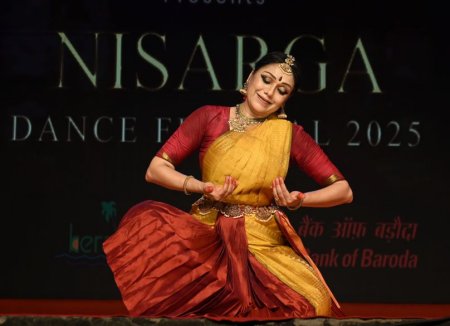 Rama Vaidyanathan Next came Rama Vaidyanathan and two of her distinguished disciples on stage. They began their recital with a Devi Sthuthi in which the multi-dimensional goddess was stylishly concretized. The geometrical elegance and precision of movements lent an authority to the theme. Afterwards Rama deliberately chose an item the content of which is very much universal. Her Jeeva Dashavastha was broadly based on the lyrics of Guru Nanak. The dancer succinctly portrayed the ten different stages in a man's life right from his birth till his death. The quintessential characteristics of childhood, boyhood, youthfulness, middle age and old age came alive on stage thanks to the dancer's deft treatment of each segment. The old man's yearning for the retrieval of his youthfulness was appropriately allied to the context of King Yayati's plea and his son Puru's sacrifice. Rama's disciples later poignantly elucidated a lesser-known Swathi Thirunal composition in Hindi, "Main to nahi jaaun Janani jamuna teer". Yashoda prompting child Krishna to go to the banks of the river Yamuna and his disinclination to go fearing the pranks of the Gopikas were delineated with a touch of humour. In contrast, the angst of the Gopikas who fail to find their beloved Krishna along the banks of the river made the entire piece memorable. The finale was Shivoham, a soulful prayer to Lord Siva. The two-day festival has instilled a sense of optimism in the minds of the organizers to move forward confidently. 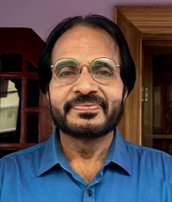 Former Deputy Registrar of Kerala Kalamandalam, V Kaladharan is also an art critic. He has published several articles at the academic level. 'From Meditative Learning to Impersonal Pedagogy' was published in an anthology 'Qui Parley' initiated and released by scholars and writers from the University of California, Berkeley. His articles on Indian performing arts and literature regularly appear in magazines and journals, and in the Friday Page of The Hindu. |